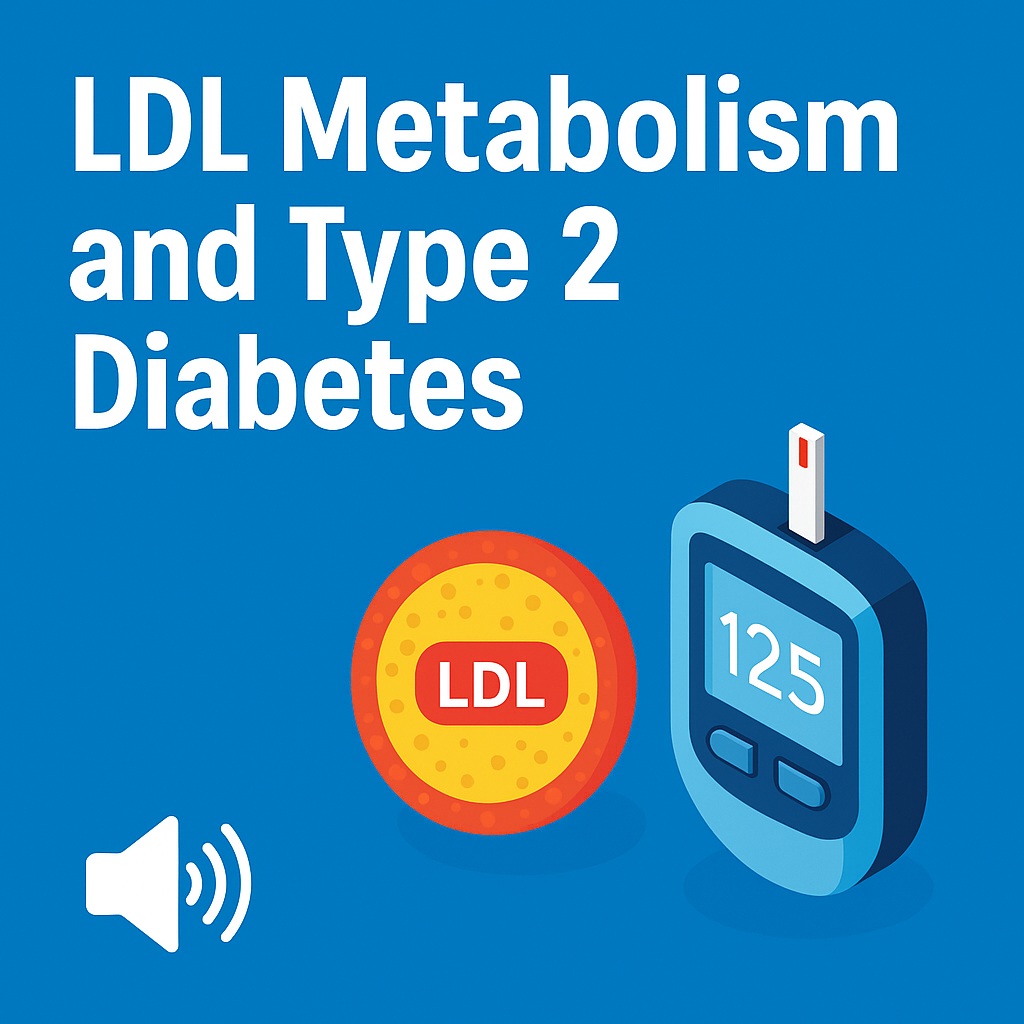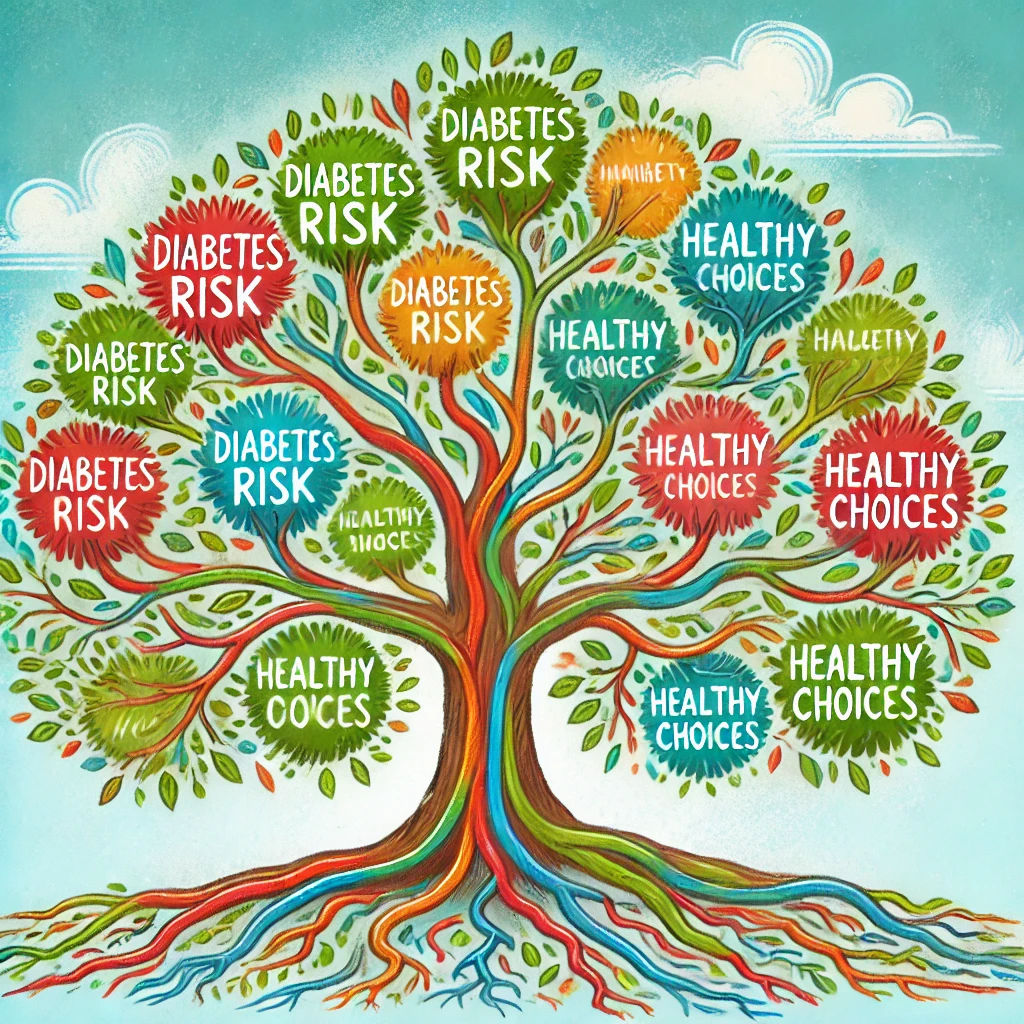This audio article discusses how diabetes increases cardiac risk through its effects on the LDL and HDL.
Tag: Diabetes
Audio: Breaking the Cycle of Diabetes in Your Family
This audio is about how diabetes does not striclyt run in families.
Does Diabetes Run in the Family? Here’s the Real Truth
In this article, we’ll look at what really causes diabetes to cluster in families, why genes are only one part of the story, and how you can take charge of your health — no matter what your family history says.
Family History Doesn’t Mean You’ll Develop Type 2 Diabetes
Introduction “Diabetes runs in my family, so I guess there’s nothing I can do.” If you’ve ever thought that—or heard it from someone you care about—you’re not alone.It’s a common belief, but it’s also dangerously incomplete. It’s true that genetics plays a role in your risk for developing type 2 diabetes. Scientists have identified specific…
Sugary Drinks Exposed: The Shocking Cause Of Gout You Need To Know
This article reveals fructose in sugary drinks as a cause of gout that many don’t know.
Blood Sugar Secrets: Why Breakfast Holds The Key To Control
This article discusses the best time to check the postprandial or after-meal blood sugar and why it is extremely important.
Stress: The Hidden Trigger Behind Diabetes You Need To Know
This vital article discusses how chronic stress can lead to diabetes. Stress is inevitable, but when it becomes chronic, it can have far-reaching effects on our health. One of these effects is the development of type II diabetes. The review article “Stress-Induced Diabetes: A Review,” published in Cureus, sheds light on how prolonged stress disrupts the…
Trigger Finger and Its Alarming Relationship with High Blood Sugar
This article explores the connection between high blood sugar and trigger finger, how this condition develops, and what can be done to manage it effectively. Trigger finger, medically known as stenosing tenosynovitis, is a condition where one or more fingers lock or catch when bent, causing pain, stiffness, and limited movement. While commonly associated with…
Prevent Hypoglycemia with Smart Medication Adjustments
This indispensable article shows that once one eats better and increases physical activity, diabetes medications may need to be adjusted to prevent hypoglycemia.
The Shocking Truth About Spike Proteins, Sugar And Inflammation
What you need to know about spike proteins in your body from COVID-19 and the mRNA jabs and how to prevent its complications.
Flaxseed: Lowers Sugar And Great Source of Valuable Omega 3
Flaxseed is inexpensive, lowers blood sugar and is a great source of omega-3 fatty acids.
Maltodextrin Exposed: The Hidden Sugar Found in Sugar-Free Sweeteners
This article discusses the dangers of maltodextrin hidden in sugar-free sweeteners. Many people turn to artificial sweeteners as a substitute in their quest to cut sugar and calories from their diets. While marketed as a healthier alternative, some artificial sweeteners contain maltodextrin, which can seriously affect blood sugar levels, weight management, and overall health. What…
High Blood Sugar and Vision: A Guide for Everyone
This article explores the wide-ranging effects of elevated blood sugar on eye health, preventive measures to safeguard vision, and what everyone—including those without diabetes—should know. High blood sugar is often associated with diabetes, but its effects on the eyes aren’t limited to those with advanced diabetes. Even normoglycemics (those with normal blood sugar levels) and…
Blood Sugar Crisis: The Truth About Organ Damage
This article discusses what happens when blood sugar increases in non-diabetics and diabetics and the organ damage that results. Essential Medical Terms Before exploring the effects of high blood sugar, let’s understand key medical terms: Hyperglycemia: High blood sugar levels Normoglycemic: A person with normal blood sugar regulation Postprandial: After eating a meal Endothelial: Relating…
Berberine: A Natural and Tested Approach To Blood Sugar Management
Berberine is a bioactive compound extracted from various plants, such as barberry, goldenseal, and Oregon grape. Traditional Chinese and Ayurvedic medicine have long used berberine for its health benefits, and recent research highlights its potential to support blood sugar regulation. Berberine’s effects on glucose and insulin sensitivity make it a popular natural option for managing…
This Is What The Amazing Insulin Plant Can Do To Blood Sugar
In this article, we’ll explore the effects of the insulin plant on health, especially on blood sugar, and examine the research behind its benefits. The insulin plant, scientifically known as Chamaecostus cuspidatus or Costus igneus, has gained popularity in natural health circles for its purported ability to help manage blood sugar levels. Often referred to…
Why You Need Ceylon Cinnamon To Have Its Blood Sugar Benefits and the Risk of the Bad Ones: Complete Guide
Cinnamon is a popular spice with a long history of use in traditional medicine. Recent research has highlighted its potential health benefits, particularly for blood sugar control. Not all cinnamon is created equal. There are critical differences between Ceylon, Saigon, and Cassia cinnamon, with some types being safer and more effective for regular consumption. In…
Omega-3 Fatty Acids: A Great Player In Blood Sugar Control
Omega-3 fatty acids, particularly EPA (eicosapentaenoic acid) and DHA (docosahexaenoic acid), have gained recognition for their potential role in blood sugar regulation. While primarily known for their cardiovascular benefits, emerging research suggests these essential fatty acids may contribute significantly to blood sugar control. Mechanisms of Blood Sugar Control Omega-3 fatty acids influence blood sugar levels through…
How Drinking Coffee After a Meal Can Increase Postprandial Blood Sugar
Many enjoy a warm cup of coffee after meals, often as a comforting ritual to end a satisfying meal. However, recent studies suggest that this widespread habit could influence blood sugar levels, particularly for those already managing prediabetes or diabetes. This article explores how drinking coffee after a meal may impact postprandial (after-meal) blood glucose…
The Best Foods to Lower Postprandial Blood Sugar
In the video, The One Hour Blood Sugar Predicts Common Deadly Diseases, I showed that elevated postprandial blood sugar (above 155 mg/dl or 8.6 mmol/L) can predict or lead to diseases of the arteries, nerves, and insulin resistance. The danger of persistently elevated postprandial blood sugar applies to people with standard glucose tolerance, meaning those…



